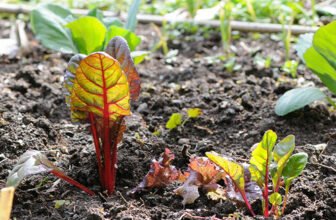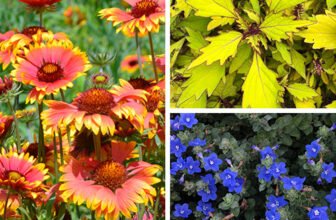Introduction:
Creating a beautiful and sustainable lawn in Arizona can be challenging due to the state’s hot and arid climate. However, with the right choice of grass, you can transform your backyard into a lush oasis that thrives in the desert sun. In this extensive guide, we will delve into the various types of grasses suitable for Arizona backyards, considering factors such as drought resistance, heat tolerance, maintenance requirements, and aesthetic appeal. By the end, you’ll know how to select the perfect grass variety for your Arizona landscape.
Understanding Arizona’s Climate:
Arizona’s climate is characterized by its hot summers, mild winters, and low precipitation. In summer, temperatures often soar above 100°F (37.8°C), while rainfall is scarce, especially in desert regions. These conditions present unique challenges for maintaining a healthy lawn, as traditional grass species may struggle to survive without sufficient water and protection from the sun’s intense rays.
Ideal Grass Characteristics:
Before exploring specific grass types, it’s essential to understand the characteristics that make a grass variety well-suited to Arizona’s climate:
- Drought Resistance: Given limited water availability, selecting a grass variety that thrives in drought conditions is crucial for sustainability and water conservation.
- Heat Tolerance: Arizona’s intense summer heat requires grass that can withstand high temperatures without wilting or browning, ensuring year-round greenery.
- Low Maintenance: Opting for a grass type that requires minimal upkeep can save time, effort, and resources in the long run, allowing you to enjoy your backyard without constant maintenance.
- Disease and Pest Resistance: Resilience against common diseases and pests prevalent in Arizona can help maintain a healthy lawn with minimal intervention, reducing the need for chemical treatments.
Types of Grass Suitable for Arizona Backyards:
- Bermuda Grass (Cynodon dactylon):
- Bermuda grass is a warm-season grass known for its excellent heat tolerance and drought resistance, making it a popular choice for Arizona lawns.
- It thrives in full sunlight and withstands heavy foot traffic, making it ideal for active outdoor spaces like backyard play areas.
- Bermuda grass grows rapidly and recovers quickly from damage, but it may require more frequent mowing during the growing season to maintain its manicured appearance.
- Buffalo Grass (Buchloe dactyloides):
- Buffalo grass is a native warm-season grass well-adapted to Arizona’s arid conditions.
- It boasts excellent drought tolerance and requires minimal irrigation once established, making it an eco-friendly choice for water-conscious homeowners.
- Buffalo grass has a fine texture and low growth habit, giving it a natural, prairie-like appearance that requires less maintenance than other grass species.
- While it may turn brown during extreme heat or drought, Buffalo grass quickly greens up with the onset of cooler temperatures or supplemental watering.
- Zoysia Grass (Zoysia spp.):
- Zoysia grass is gaining popularity in Arizona for its dense growth, durability, and tolerance to heat and drought.
- It forms a thick carpet-like turf that withstands heavy use and maintains its color even in hot, dry conditions, providing a luxurious backdrop for outdoor activities.
- Zoysia grass exhibits a moderate growth rate, reducing mowing frequency compared to Bermuda grass. It also requires less water overall, making it an attractive option for water-wise landscaping.
- While it thrives in full sun, Zoysia grass may struggle in shaded areas and is best suited to open sunny landscapes.
- St. Augustine Grass (Stenotaphrum secundatum):
- St. Augustine grass offers a lush, carpet-like appearance that adds a touch of elegance to Arizona landscapes.
- It tolerates heat well and retains its vibrant green throughout the year with proper care and irrigation, creating a visually stunning backdrop for outdoor entertaining.
- St. Augustine grass prefers partial shade and requires regular watering to thrive in Arizona’s climate, making it better suited to landscapes with access to irrigation or natural shade.
- While it may not be as drought-resistant as Bermuda or Buffalo grass, St. Augustine grass can still perform well with adequate moisture and proper maintenance.
- Tall Fescue (Festuca arundinacea):
- Tall fescue is a cool-season grass that can thrive in the higher elevations of Arizona, where temperatures are milder.
- Compared to other cool-season grasses, it exhibits good heat tolerance and can remain green year-round with proper maintenance, providing a vibrant contrast to the desert landscape.
- Tall fescue requires more water than warm-season grasses like Bermuda or Buffalo grass, making it better suited to areas with access to irrigation or cooler climates within Arizona.
- While it may not be as well-suited to Arizona’s arid conditions as warm-season grasses, tall fescue can still thrive with proper care and irrigation in suitable microclimates.
Conclusion:
Choosing the best type of grass for your Arizona backyard involves carefully considering factors such as drought resistance, heat tolerance, maintenance requirements, and aesthetic appeal. Bermuda grass, Buffalo grass, Zoysia grass, St. Augustine grass, and Tall fescue are among the top choices for Arizona landscapes, each offering unique benefits suited to different preferences and conditions. By selecting a grass variety that thrives in Arizona’s climate and providing it with proper care and maintenance, you can enjoy a vibrant, green lawn year-round, enhancing the beauty and comfort of your outdoor space.






